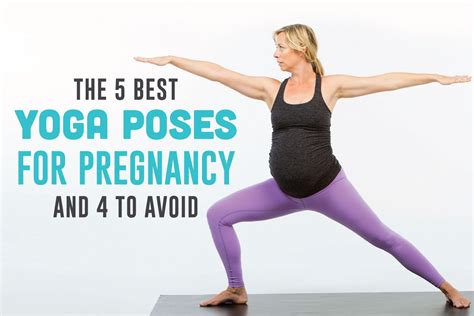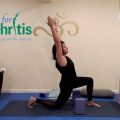Essential Yoga Poses for Expecting Mothers: A Comprehensive Guide
Pregnancy is a transformative experience that brings joy, anticipation, and sometimes discomfort. Yoga can serve as a powerful tool for pregnant moms, helping to alleviate physical discomfort, enhance emotional well-being, and prepare for childbirth. This article explores five essential yoga poses tailored specifically for expecting mothers, providing detailed insights into their benefits, practical applications, and expert recommendations.
Key Concepts
- Mind-Body Connection: The integration of mental and physical well-being through yoga practice.
- Safety Considerations: Importance of practicing yoga safely during pregnancy.
- Adaptability: Modifying poses to accommodate physical changes during pregnancy.
- Breath Awareness: The role of breath in enhancing relaxation and focus.
- Community Support: Engaging with other pregnant women through yoga classes.
Historical Context
Yoga has ancient roots, dating back thousands of years in India. Traditionally, it has been practiced for its physical, mental, and spiritual benefits. Over the decades, various forms of yoga have emerged, with prenatal yoga specifically designed to address the needs of pregnant women gaining popularity in the West since the 20th century. This practice emphasizes safety, breathing techniques, and poses that support the pregnant body while fostering a deeper connection with the baby.
Current State Analysis
As of now, prenatal yoga is widely recognized and practiced in many parts of the world. Numerous studies indicate that pregnant women who engage in yoga experience less anxiety, reduced back pain, and improved overall well-being. Despite its benefits, misconceptions still exist regarding the safety of practicing yoga during pregnancy. Addressing these misconceptions is crucial for encouraging more expecting mothers to participate in yoga classes.
Practical Applications
The following sections detail five essential yoga poses suitable for pregnant women, focusing on their benefits, modifications, and safety tips.
1. Cat-Cow Stretch (Marjaryasana-Bitilasana)
Benefits: This pose improves spinal flexibility, alleviates back pain, and helps in aligning the spine. It encourages deep breathing, which can reduce anxiety.
How to Perform:
- Start on your hands and knees in a tabletop position.
- Inhale, arching your back and lifting your head (Cow).
- Exhale, rounding your back and tucking your chin (Cat).
- Repeat for several breaths, moving with your breath.
Modification: Use a cushion or bolster under your knees for added support.
2. Warrior II (Virabhadrasana II)
Benefits: This pose strengthens the legs, opens the hips, and improves balance, which is essential as the body changes during pregnancy.
How to Perform:
- Stand with your feet wide apart, turning your right foot out and your left foot slightly in.
- Bend your right knee, ensuring it doesn’t extend beyond your ankle.
- Extend your arms parallel to the ground, gazing over your right hand.
- Hold for several breaths and switch sides.
Modification: Keep the back heel lifted if balance is challenging.
3. Child’s Pose (Balasana)
Benefits: This resting pose helps alleviate tension in the back, shoulders, and neck, providing a gentle stretch for the hips and thighs.
How to Perform:
- Kneel on the floor, touching your big toes together and sitting on your heels.
- Hinge at your hips to fold forward, resting your forehead on the mat.
- Stretch your arms in front of you or let them rest alongside your body.
Modification: Use a cushion under your forehead for added comfort.
4. Seated Forward Bend (Paschimottanasana)
Benefits: This pose stretches the spine, hamstrings, and calves, promoting relaxation and reducing stress.
How to Perform:
- Sit on the floor with your legs extended in front of you.
- Inhale, raising your arms overhead, and exhale as you hinge at your hips, reaching for your feet.
- Hold the position, breathing deeply, without forcing the stretch.
Modification: Bend your knees slightly if necessary, and use a strap around your feet for support.
5. Corpse Pose (Savasana)
Benefits: This final relaxation pose allows for complete relaxation and reflection, helping to integrate the benefits of the practice.
How to Perform:
- Lie on your back with your legs slightly apart and arms resting at your sides, palms facing up.
- Close your eyes and focus on your breath.
- Stay in this position for several minutes, allowing your body to relax.
Modification: Place a bolster or pillow under your knees for comfort.
Case Studies
| Study | Participants | Findings |
|---|---|---|
| Prenatal Yoga and Anxiety | 50 pregnant women | Significant reduction in anxiety levels post-intervention. |
| Impact on Physical Discomfort | 75 expecting mothers | Decreased back pain and improved mobility reported. |
| Yoga’s Role in Labor | 100 women | Shorter labor durations and reduced use of pain medication. |
| Postpartum Recovery | 40 new mothers | Improved emotional health and physical recovery observed. |
| Yoga for Pregnancy Complications | 30 women with high-risk pregnancies | Improved coping mechanisms and emotional support reported. |
Stakeholder Analysis
Key stakeholders in the realm of prenatal yoga include:
- Expecting Mothers: Primary beneficiaries of yoga practice, seeking relief and community.
- Yoga Instructors: Essential for guiding safe practices and modifications.
- Healthcare Providers: Influence recommendations for exercise during pregnancy.
- Family and Partners: Offer emotional and physical support for mothers.
- Yoga Studios: Provide safe environments for practice and community building.
Implementation Guidelines
To safely incorporate yoga into a pregnancy routine, consider the following guidelines:
- Consult with a healthcare provider before starting any new exercise regimen.
- Choose classes specifically designed for prenatal yoga.
- Listen to your body and modify poses as needed.
- Focus on breath awareness and relaxation techniques.
- Engage with a community of other pregnant women for support.
Ethical Considerations
When practicing yoga during pregnancy, it is vital to consider the following ethical issues:
- Informed Consent: Ensuring participants are aware of the benefits and risks of yoga during pregnancy.
- Inclusivity: Providing accessible classes for women of all backgrounds and fitness levels.
- Instructor Qualifications: Ensuring instructors are trained specifically in prenatal yoga.
- Community Building: Fostering a supportive environment among expecting mothers.
Limitations and Future Research
While numerous studies suggest the benefits of yoga for pregnant women, limitations include:
- Small sample sizes in some studies.
- Lack of diversity in participant demographics.
- Need for long-term studies on postpartum benefits.
Future research should focus on:
- Investigating the impact of yoga on various pregnancy complications.
- Studying the long-term effects of prenatal yoga on maternal and child health.
- Exploring the effectiveness of online vs. in-person classes during pregnancy.
Expert Commentary
As a yoga practitioner and educator, I emphasize the profound benefits that yoga can provide to pregnant women. The poses discussed in this article not only promote physical health but also enhance emotional well-being. The incorporation of yoga into prenatal care should be encouraged, with an emphasis on safety, adaptability, and community support.








